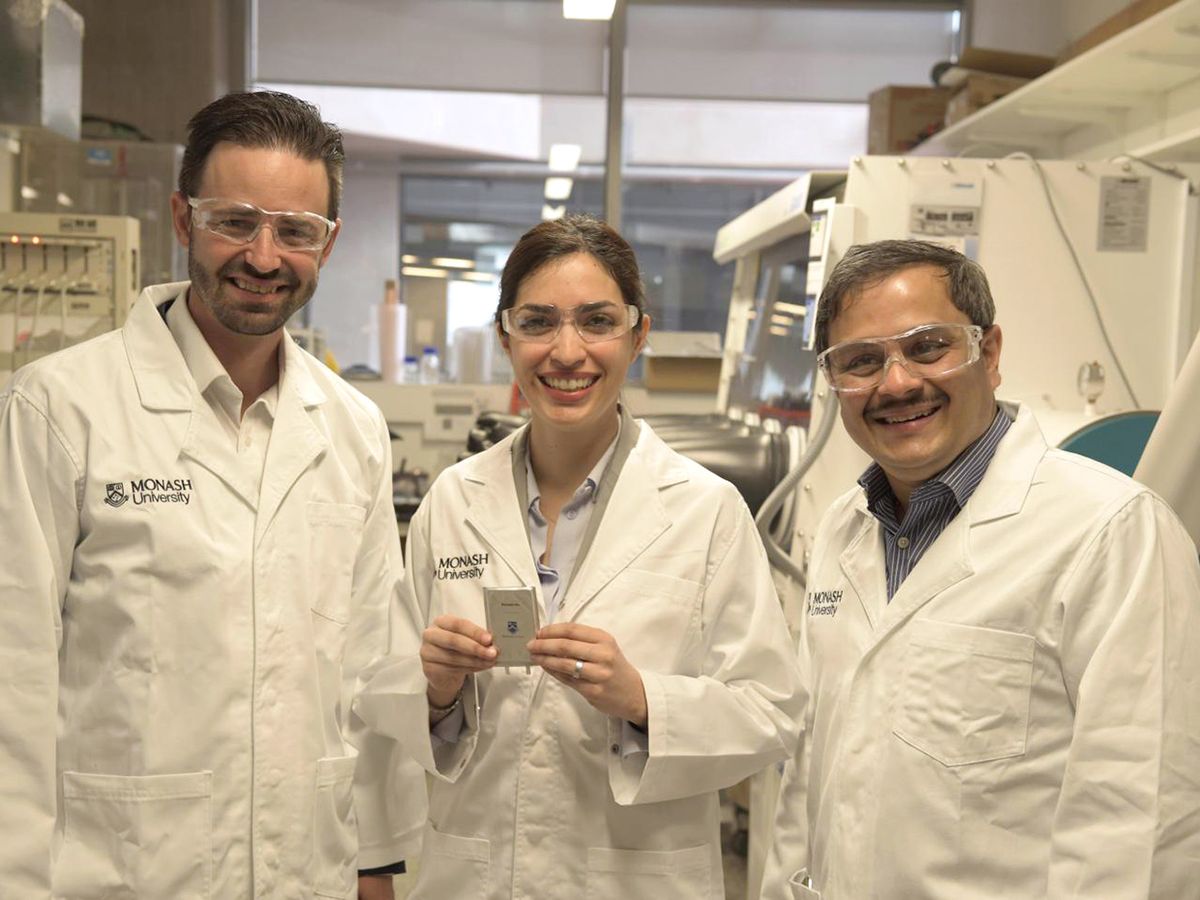Lithium-sulfur batteries seem to be ideal successors to good old lithium-ion. They could in theory hold up to five times the energy per weight. Their low weight makes them ideal for electric airplanes: firms such as Sion Power and Oxis Energy are starting to test their lithium-sulfur batteries in aircraft. And they would be cheaper given their use of sulfur instead of the rare-earth metals used in the cathode today.
But the technology isn’t yet commercial mainly because of its short life span. The cathode starts falling apart after just 40 to 50 charge cycles.
By designing a novel robust cathode structure, researchers have now made a lithium-sulfur battery that can be recharged several hundred times. The cells have an energy capacity four times that of lithium-ion, which typically holds 150 to 200 watt-hours per kilogram (Wh/kg). If translatable to commercial devices, it could mean a battery that powers a phone for five days without needing to recharge, or quadruples the range of electric cars.
That’s unlikely to happen, since energy capacity drops when cells are strung together into battery packs. But the team still expects a “twofold increase at battery pack level when [the new battery is] introduced to the market,” says Mahdokht Shaibani, a mechanical and aerospace engineer at Australia’s Monash University who led the work published recently in the journal Science Advances.
Shaibani likens the sulfur cathode in a lithium-sulfur battery to a hard-working, overtaxed office worker. It can take on a lot, but the job demands cause stress and hurt productivity. In battery terms, during discharge the cathode soaks up a large amount of lithium ions, forming lithium sulfide. But in the process, it swells enormously, and then contracts when the ions leave during battery charging. This repeated volume change breaks down the cathode.
So Shaibani came up with the idea of giving the overworked sulfur space to breathe. She did that by reducing the amount of binder in the cathode. Sulfur isn’t conductive, so researchers add carbon to the cathode, and the binder glues the sulfur to the carbon. But in a conventional cathode “the binder creates a continuous dense network, leaving limited free volume,” she explains.
By carefully controlling how the binder is added and processed, she made a webby network that uses a minimal amount of binder to hold the carbon and sulfur particles together. “This leaves increased space for accommodating the changes in the structure and the resultant stress,” she says. “As a result, the sulfur electrode maintains its integrity over long-term cycling.”
The battery’s life span drops as the cells get larger. The team’s large pouch cells lasted for 100 charge-discharge cycles. “To achieve the 500-cycle target, the same sort of breakthroughs on stabilization of the lithium electrode are vital,” she says.
Still, the Monash team hopes to introduce a market-ready product in two to four years. They have filed a patent, and plan to make larger prototypes to test in cars and solar grids in Australia this year.
Prachi Patel is a freelance journalist based in Pittsburgh. She writes about energy, biotechnology, materials science, nanotechnology, and computing.



